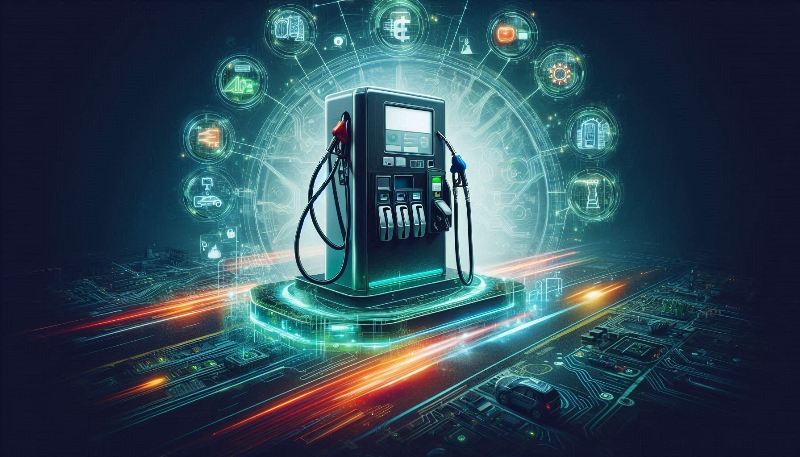Fuel dispensers are essential components in fueling stations, responsible for safely and efficiently dispensing gasoline, diesel, and other fuels into vehicles. Over the years, advances in technology have significantly transformed the design, operation, and accuracy of fuel dispensers. This article will delve into the latest innovations in fuel dispenser technology, explore how they enhance operational efficiency, improve accuracy, and ensure compliance with regulatory standards.
What is a Fuel Dispenser?
A fuel dispenser is a machine used to pump liquid fuels such as gasoline, diesel, or biofuels into vehicles at filling stations. It typically consists of a pump, a meter to measure the fuel being dispensed, and nozzles through which the fuel flows. Modern fuel dispensers also feature digital interfaces that display the cost, volume, and type of fuel delivered.
- Fuel pumping technology
- Fueling station equipment
- Metering accuracy
- Fuel measurement systems
- Dispenser calibration
- Automated fuel dispensers
- Fuel management system
1. Fuel Pumping Technology
Fuel pumping technology refers to the mechanisms and systems used to transport liquid fuel from storage tanks to the fuel dispenser, and ultimately into vehicles. This technology involves the use of pumps (usually centrifugal or positive displacement pumps) to generate the pressure required to move the fuel through the dispenser. Over time, advancements in fuel pumping technology have focused on improving the efficiency, safety, and durability of the pumps, while also reducing energy consumption. Modern pumps often include energy-efficient motors and enhanced sealing mechanisms to prevent leaks.
2. Fueling Station Equipment
Fueling station equipment encompasses all the machinery and tools needed to operate a fuel station. This includes fuel dispensers, underground storage tanks, pumps, hoses, nozzles, and payment terminals. It also covers safety equipment like fire extinguishers, emergency shutoff switches, and vapor recovery systems that capture harmful fumes during fueling. With the evolution of fuel stations, equipment now often includes advanced technology for monitoring fuel levels, automating payment processes, and ensuring environmental compliance.
3. Metering Accuracy
Metering accuracy refers to the precision with which a fuel dispenser measures and dispenses fuel. Accurate metering ensures that customers receive exactly the amount of fuel they are paying for, and that fuel station owners maintain correct inventory records. Modern fuel dispensers utilize advanced fuel measurement systems with digital meters that provide higher precision compared to older mechanical meters. Regular dispenser calibration is crucial for maintaining this accuracy over time and adhering to regulatory standards.
4. Fuel Measurement Systems
Fuel measurement systems are the internal components within a fuel dispenser that measure the amount of fuel being dispensed. These systems are responsible for calculating the volume of fuel delivered to the customer’s vehicle. In modern dispensers, these systems often involve sensors and electronic meters that provide real-time data on fuel flow. Fuel measurement systems are critical for ensuring transaction transparency, reducing fuel loss, and optimizing fuel station operations.
5. Dispenser Calibration
Dispenser calibration is the process of adjusting a fuel dispenser’s metering system to ensure that it dispenses the correct amount of fuel. Calibration ensures that the readings on the display (e.g., the volume of fuel dispensed and the total cost) are accurate. Calibration is typically done by comparing the dispenser’s output with a certified measurement standard. Over time, fuel dispensers may drift out of calibration due to wear and tear or environmental factors, so regular calibration is important for regulatory compliance and customer trust.
6. Automated Fuel Dispensers
Automated fuel dispensers are modern systems that allow for self-service fueling, where customers can pump their own fuel without the need for station attendants. These dispensers often include features like touchscreens for selecting fuel types, integrated payment systems (e.g., credit cards, mobile payments), and user-friendly instructions. The automation reduces wait times, enhances operational efficiency, and lowers labor costs for fuel station owners. These systems also provide enhanced security features, such as payment encryption and real-time monitoring.
7. Fuel Management System
A fuel management system is a comprehensive system designed to monitor, control, and optimize fuel use in a fueling station or a fleet. It integrates hardware and software to track fuel levels, monitor dispenser performance, manage inventory, and analyze fuel consumption trends. Advanced fuel management systems can also detect fuel theft, ensure regulatory compliance, and provide automated reports to fuel station owners. These systems are invaluable for enhancing efficiency and reducing operating costs by providing data-driven insights into fuel operations.
Key Features of Modern Fuel Dispensers
- Automated Fuel Dispensing Systems
Automation is a critical innovation in modern fuel dispenser systems. Automated fuel dispensers reduce human error and enhance efficiency by allowing customers to self-serve and process transactions digitally. These systems can handle various types of payments, including cashless transactions, which streamline the fueling process. - Advanced Metering Accuracy
Metering systems in fuel dispensers are now equipped with advanced fuel measurement systems that improve the precision of fuel delivery. With better calibration, these systems ensure that the exact volume of fuel is dispensed, which is vital for regulatory compliance and customer trust. Regular dispenser calibration and advanced metering software help minimize discrepancies in fuel volumes. - Energy Efficiency and Eco-Friendliness
Environmental concerns are driving advancements in fuel pumping technology that lower energy consumption. Energy-efficient pumps not only reduce operating costs for fuel station owners but also minimize the environmental impact by consuming less electricity. Additionally, certain models of fuel dispensers are designed to work with alternative fuels, contributing to a greener future. - Security Features
Modern fuel management systems are integrated with security features to prevent fuel theft and fraud. Some fuel dispensers use encrypted communication for payment processing, while others have built-in systems to detect anomalies during the fueling process.
Comparison of Fuel Dispenser Features
| Feature | Traditional Dispensers | Modern Dispensers |
|---|---|---|
| Dispensing Method | Manual operation | Automated, self-service |
| Metering Accuracy | Basic mechanical meters | Advanced digital fuel measurement systems |
| Payment System | Cash or card | Contactless payments, mobile payments |
| Security Measures | Limited | Encrypted payment, anomaly detection |
| Energy Efficiency | Standard | Low energy consumption fuel pumping technology |
Answering Snippet Questions:
- What is a fuel dispenser and how does it work?
A fuel dispenser is a machine designed to pump fuel from an underground storage tank into vehicles. It works by drawing fuel into the pump, measuring the quantity through a metering system, and dispensing it through a nozzle into the vehicle’s fuel tank. - How accurate are fuel dispensers?
Modern fuel dispensers are highly accurate due to advanced metering accuracy systems. Regular dispenser calibration ensures that the delivered fuel matches the displayed volume, reducing errors and ensuring compliance with local regulations. - What are the benefits of automated fuel dispensers?
Automated fuel dispensers offer several benefits, including faster service, reduced human error, and enhanced security. They allow customers to serve themselves, reducing wait times, and accept multiple payment types, which streamlines the process at fuel stations. - What security features are available in modern fuel dispensers?
Modern fuel management systems include features like encrypted communication for payments, anomaly detection during fuel dispensing, and real-time monitoring to prevent theft and fraud.
Conclusion
Fuel dispenser technology has come a long way, driven by innovations in automation, accuracy, energy efficiency, and security. These developments are making fuel stations more efficient, eco-friendly, and customer-centric. With automated fuel dispensers, advanced fuel measurement systems, and integrated security, the future of fueling stations looks promising.

